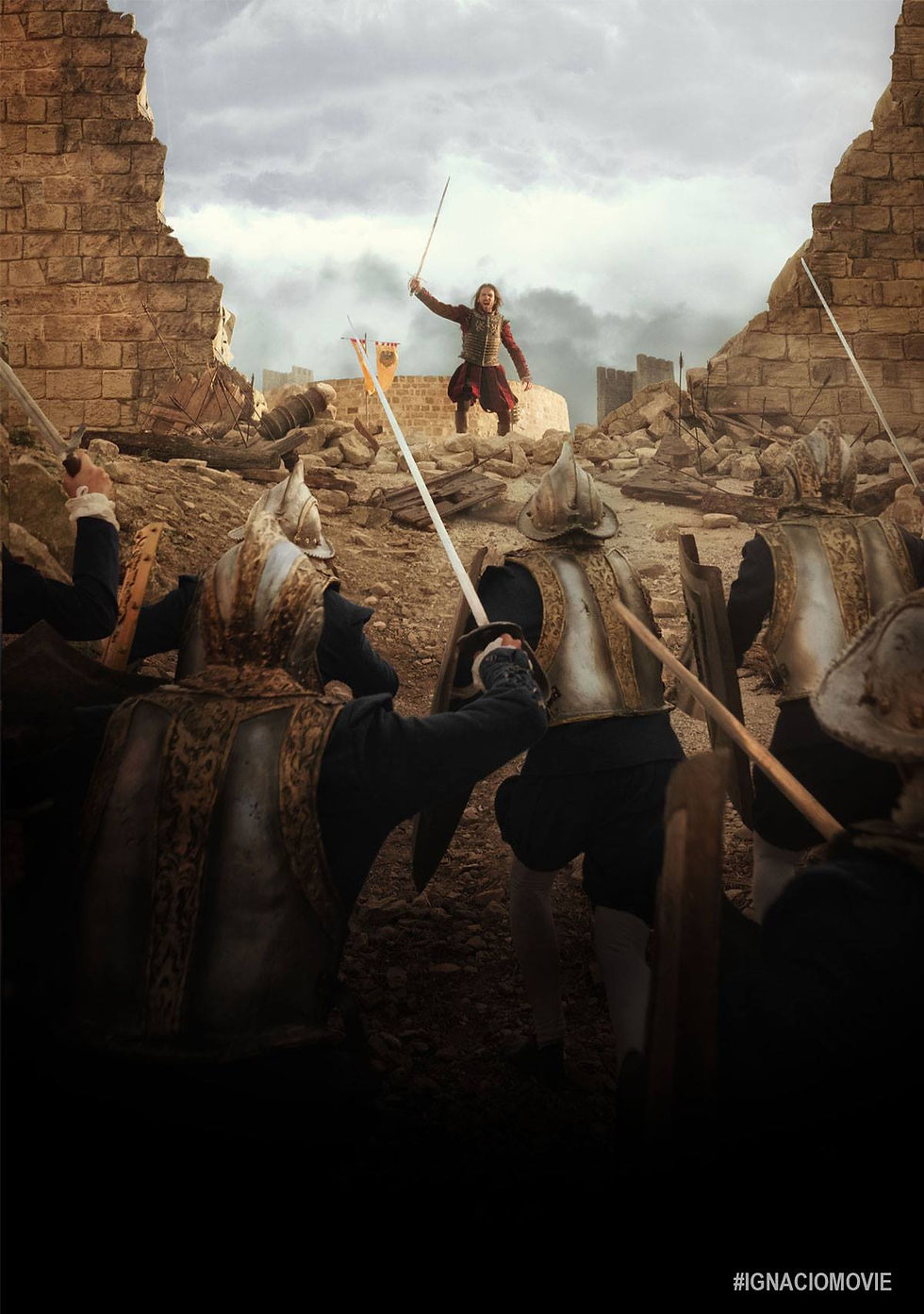The Spirit of God: Giving Hope to the Filipino Art-Music-Film Industry
- Paolo Halili
- Dec 8, 2016
- 4 min read

Ignacio de Loyola presents itself as one of the few Filipino films that was produced overseas, and by a Filipino-dominated crew. From pre-production stages, to its actual production, and post-production, the film exemplified consistency in maintaining its unique mark in the Filipino film industry.
In its pre-production stage, looking for actors and actresses for the film already raised the standard of casting as the main characters in the film were all hired from Spain, which fostered the authenticity of Ignacio de Loyola’s narrative. The actual production showed similar efforts to promote authenticity as the crew chose the appropriate areas in Spain to shoot the film, and not to mention the talented actors that gave life to the film. For this critique however, I will delve deeper into the post-production stage of the film—specifically, its soundtrack, which was also created by a Filipino.
The soundtrack of the film was originally composed and arranged by Maestro Ryan Cayabyab, one of our best musicians in the Philippines today. “Sir C” as he is known for, considered this project as a major milestone in his career, being able to experience “many firsts” in scoring the film. He states, “[t]his is the only film I have done using a full orchestra with a choir. This is also the first international-in-scope film I have ever done shot entirely in Spain, using European actors.” [1] Sir C also did extensive research, as well as handpicking the most appropriate instruments to best encapsulate the imagery of Ignacio’s narrative.

“I did research on medieval to early renaissance music to capture the period and used textures to add to the orchestra texture, like guitars to approximate lute colors, recorders and some other percussion instruments although not necessarily acoustic.” [2]
Not only did the production of this score present consistency in the period as to when Ignacio’s narrative actually happened, but also presented an imaginative interpolation of what Ignacio could have actually experienced emotionally and spiritually in his story. Three themes from the film will be the basis of critique.
The epic theme in the film entitled “The Sword of Loyola” expressed itself in a highly dramatic fashion as it begun with a cello solo with progressive accompaniments of drums, brass and string instruments. The theme circulates on the symbolism of Ignacio’s sword, which emphasized his 180-degree turn from a soldier of men, to a soldier of God. Though this theme had a dark tone, it sufficiently gave an image of truly submitting to the sovereignty of God and offering one's life to Him. In Scripture, this image is “dying” a man’s life, and being raised to a new life in Christ (Romans 12:1-2). [3] Apart from Ignacio’s spiritual journey, the film also gave a different perspective of Ignacio’s life experiences, which involved a love story between him and Catalina.
“Dancing with Catalina” was introduced with a classical guitar riff influenced by early secular renaissance music. As the recorder and string section entered the piece towards the middle, the imagery presented was quite light, which introduced another side of Ignacio’s life: his possible experience of what earthly, romantic love was like in his story: a theme that described his experiences with human reality. Though his love story gave color to the film, the narrative still gave much focus to Ignacio’s spiritual walk.

One of the most important themes in the film was about Ignacio’s decision to receive the calling that was bestowed upon Him by God. The theme song “Suscipe,” featured the ensemble of the Ateneo Chamber Singers, accompanied by strings, primarily dominated by the cello. The vocal track of this theme had several layers, which still gave much consistency to the early renaissance period, but sounded like Church music from this period. The theme was introduced with the voices as the main focus, which sung Ignacio’s original prayer, “Suscipe” in Spanish. As the voices sung “Todo es suyo; hacer con él lo que quiera” with modulation, the string section also entered powerfully, perhaps to emphasize Ignacio’s words that “everything is Yours (God), do with it what you will.” This track possibly becomes the key theme of the entire narrative because of its nature as being Ignacio’s original prayer to God after his submission to His will.
Listening to the soundtrack gave me quite an impression of what music would sound like if it were spiritually influenced. Though not so much pleasing to the ears most of the time because of its deviation to contemporary music, the soundtrack allowed me to have a much deeper perspective on music as something that is spiritual, and not just a means of entertainment; a genuine story of the great Ignacio de Loyola was already unfolded through my ears alone.
This spiritual awareness also made me think of how we Filipinos are as artists, musicians and linguists; that we are culturally rooted in God’s Word. The entire production of Ignacio de Loyola had a unique taste in it because of how it was not just a mere film to tell a story, but to show an artwork created by the hands of Filipinos, cultured in faith to our Creator.
*Article written by Paolo Halili, edited and published by Ramon Nario.
Sources:
[1] Interaksyon NEWS. “Ryan Cayabyab considers…” 2016. 4.
[2] Ibid. 12.
[3] Romans 12:1-2 NIV
Photos from:
https://www.facebook.com/ignaciomovie
http://pldthome.com/fibr/testimonials/ryan-cayabyab
http://www.ateneo.edu/news/features/ateneo-chamber-singers-%E2%80%9Cpaghayo%E2%80%9D-farewell-concert


Comments